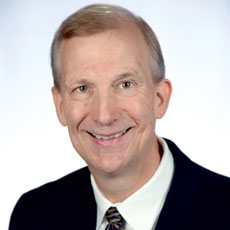
You might know the job has gotten under your skin when you find certain urges taking over.
Take, for example, debating late at night. In a bar. In a beautiful place like San Diego. And the topic is the merits of telemedicine. Flight of fancy or long-term care savior?
It happened earlier this week when some engaged LTC professionals diverted my gaze from what appeared to be a killer Texas Hold ‘Em showdown on the big screen TV in the hotel bar. Whether the flop or the river would deliver a big payoff, I’ll never know. A meeting of the minds, both younger and older, was about to ensue.
The animated discussion that advanced was fascinating at the time, but even more so in retrospect. Let me repeat: This was late at night, in a convivial West Coast metropolis where numerous forms of amusement are always possible. And the speculation took on the life of a debate over the merits of the final episode of “Game of Thrones.”
The main argument against expanded use of telemedicine came from a young man I’ll call Joe. He wants his physician and nurses bedside, not talking through a long-range hook-up.
His esteemed colleague (we’ll call her Shirley), joined me in pointing out that if you’re a senior on Medicaid and/or in a rural location, you’ll not be so picky if relief is in the offing.
Besides, we piled on, with such huge staffing shortages present and expected to grow, telemedicine can certainly bridge many gaps. And if you think we’re talking about only nurses or nurse aides, you haven’t seen the tiny number of geriatricians, which is expected to get worse even as the need continues to skyrocket.
As LeadingAge tech guru Majd Alwan pointed out Sunday at session number 1 at the group’s annual meeting, telemedicine means more than clinicians’ faces and voices from afar. It also might mean transmission of imagery, test results and more.
In the session, titled “A Guide to Implementing Telemedicine in Nursing Homes,” panelists also pointed out that many providers don’t even realize how wide the possibilities can be. They emphasized over and over the opportunities to help with ancillary services such as pharmacy and behavioral health consulting, medication reconciliation, electronic health records and more.
“I absolutely see this as an opportunity for patients with pain needs, and I can see it going to visualization of wounds for wound management,” said speaker Chris Walker, of Sharp Coronado Hospital. “The possibilities are limitless.”
Licensing is still a challenge, speakers pointed out. Some states want a physician or other licensed clinician in the same location as the patient. Others say the license must be where the company is based or the clinician would be working from.
Walker pointed out that it is particularly difficult to keep newer nurses on the roster. But all panelists agreed that offering younger employees newer technology and programs can be a good way to keep them engaged and in the fold.
But at a conference that continually stressed averting ageism and age stereotypes, Walker concluded with the phrase that pays.
“You don’t need millennials,” he said. “You need modern thinkers. They come in all ages. Find those people and engage them. A cross-generational team is ideal.”
In all kinds of places, including hotel bars, as it turns out.
Follow Executive Editor James M. Berklan @JimBerklan.




